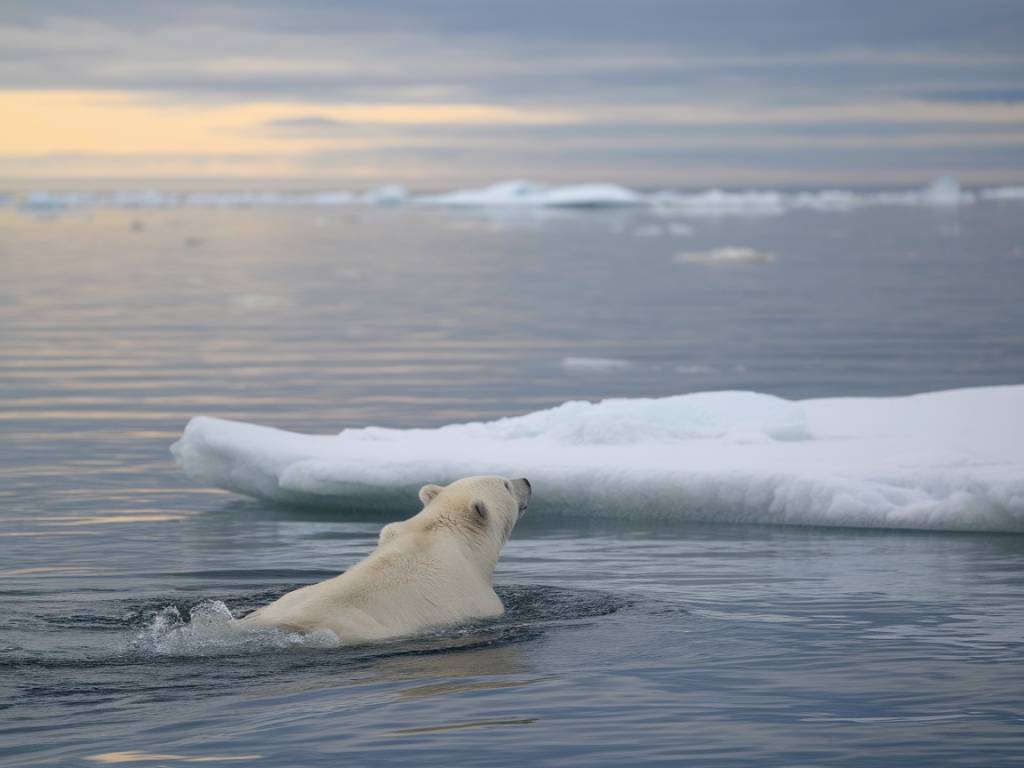As the Arctic’s ice cap continues to shrink, it isn’t just polar bears and seals that feel the bite. The intricate dance of life on Earth is profoundly affected by the thawing of this icy region. But how does this phenomenon impact global biodiversity at large?
Arctic Meltdown: A Catalyst for Change
At first glance, the melting of Arctic ice might seem like a localized issue, one that chiefly concerns the creatures inherent to that frosty realm. But when we delve deeper, the ramifications ripple far beyond the polar circle. The Arctic acts as a global thermostat, its icy expanse reflecting sunlight and regulating climate. As it melts, this balance is disrupted, leading to shifts in weather patterns worldwide. These shifts, in turn, impact the habitats and survival prospects of countless species across the globe.
The Domino Effect on Global Ecosystems
Think of the Arctic as the first domino in a long, interconnected chain. As sea ice diminishes, several processes are unleashed:
- Temperature Increase: The ocean absorbs more heat, elevating global temperatures and creating conditions unfavorable for many temperature-sensitive species.
- Ocean Currents Alteration: As freshwater from melted ice enters the oceans, it disrupts the delicate salinity balance, potentially altering global ocean currents. These currents are critical for nutrient distribution, affecting marine life from plankton to whales.
- Rising Sea Levels: Coastal ecosystems face submersion, threatening species reliant on these habitats.
Biodiversity on Edge: A Case Study of Polar Bears
Take the case of the polar bear. As sea ice retreats, these majestic creatures are forced to swim longer distances to find food, leading to exhaustion and starvation. This stress on polar bears serves as a poignant example of a wider truth: as the Arctic changes, the pressure mounts on species globally to adapt or perish.
Hidden Impact: Tundra and Boreal Forests
Beyond the ice, the thawing Arctic also affects the tundra and boreal forests. With warmer temperatures, permafrost – the frozen ground that has been locked for millennia – begins to thaw. This releases trapped greenhouse gases like methane, exacerbating climate change. It also creates an environment ripe for the introduction of new species, altering the balance and pushing native species to the brink.
Fish Tales: Changing Marine Biodiversity
Marine species are not spared either. Warmer waters can lead to shifts in fish populations, impacting fishing industries and local communities dependent on these for livelihoods. For example, some species migrate to cooler waters, while others suffer from the proliferation of marine pests and diseases, altering the marine biodiversity landscape.
Opportunities for Adaptation and Innovation
It’s crucial to recognize not just the threats but also the opportunities that come with these changes. Many species have shown remarkable adaptability; migratory patterns can adjust, and some animals may even thrive in warmer temperatures. Likewise, human innovation in conservation can play a pivotal role in mitigating these impacts. By fostering sustainable fishing practices, creating protected areas, and investing in climate-resilient infrastructures, we can buffer some of these adverse effects.
Restoring Balance: What Can We Do?
Amidst the challenges, it is crucial to ask ourselves: what actions can we take to help restore balance? There are a few areas we can focus on:
- Reduce Carbon Footprint: Governments, industries, and individuals can adopt cleaner energy sources to slow ice melting.
- Conservation Efforts: Protecting vulnerable ecosystems, both terrestrial and marine, will offer refuge for biodiversity under threat.
- Policy Development: Stronger policies that support sustainable development and biodiversity conservation are essential.
Through these efforts, we not only aid in preserving biodiversity but also secure the health and survival of our own species. After all, a biodiverse world is a resilient one. In the melody of life on Earth, every note counts, from the grandest whale to the tiniest plankton, and, yes, to every last grain of Arctic ice.

